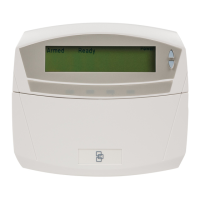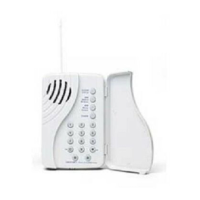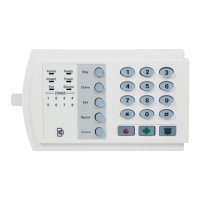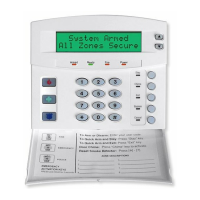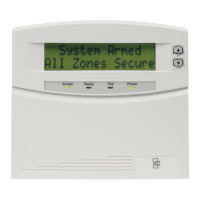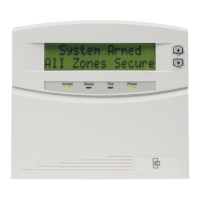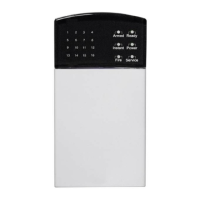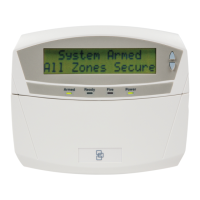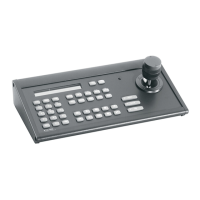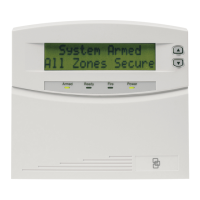6 PROGRAMMING A SAMPLE SYSTEM
6.1 The sample system
This chapter explains how to program a basic system using the tasks and settings
outlined in Table 4. More information on installing a basic system can be found in the
Installation Manual. Enter 1122 to silence the keypad if it starts beeping during
programming.
Task Programming information
Setting up the system
Setting the keypad partition and keypad number Partition 1
Setting the system date and time Master user code
Enrolling the system modules
Defaulting the panel Module 0
Defining the country code
Configuring the system
Configuring the keypads Partition 1
Keypad 1
Keypad 2
Configuring zones 4 hardware zones:
Zone 1 is an entry/exit zone.
Zone 2 and 3 are burglary zones.
Zone 4 is a fire zone.
Configuring the phone settings Phone number: 0852525
Account Code: 112233
Protocol: SIA
Programming the wireless modules
Defaulting the wireless modules RF receiver module 32
Programming the wireless detectors 2 zones:
Zone 9 is a door/window sensor burglary zone.
Zone 10 is a PIR detector burglary zone.
Table 4 A sample system
6.2 Setting up the system
When you have installed the system, select the user interface language. For more
information on changing the language, see page 9.
6.2.1 Setting the keypad partition and keypad number
You must set the partition and keypad number for the current keypad. The keypad can
connect to the bus only after you set these numbers.
1. The keypad prompts you to enter the partition number for the current keypad.
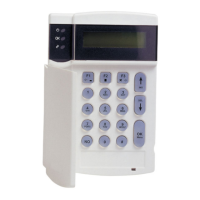
